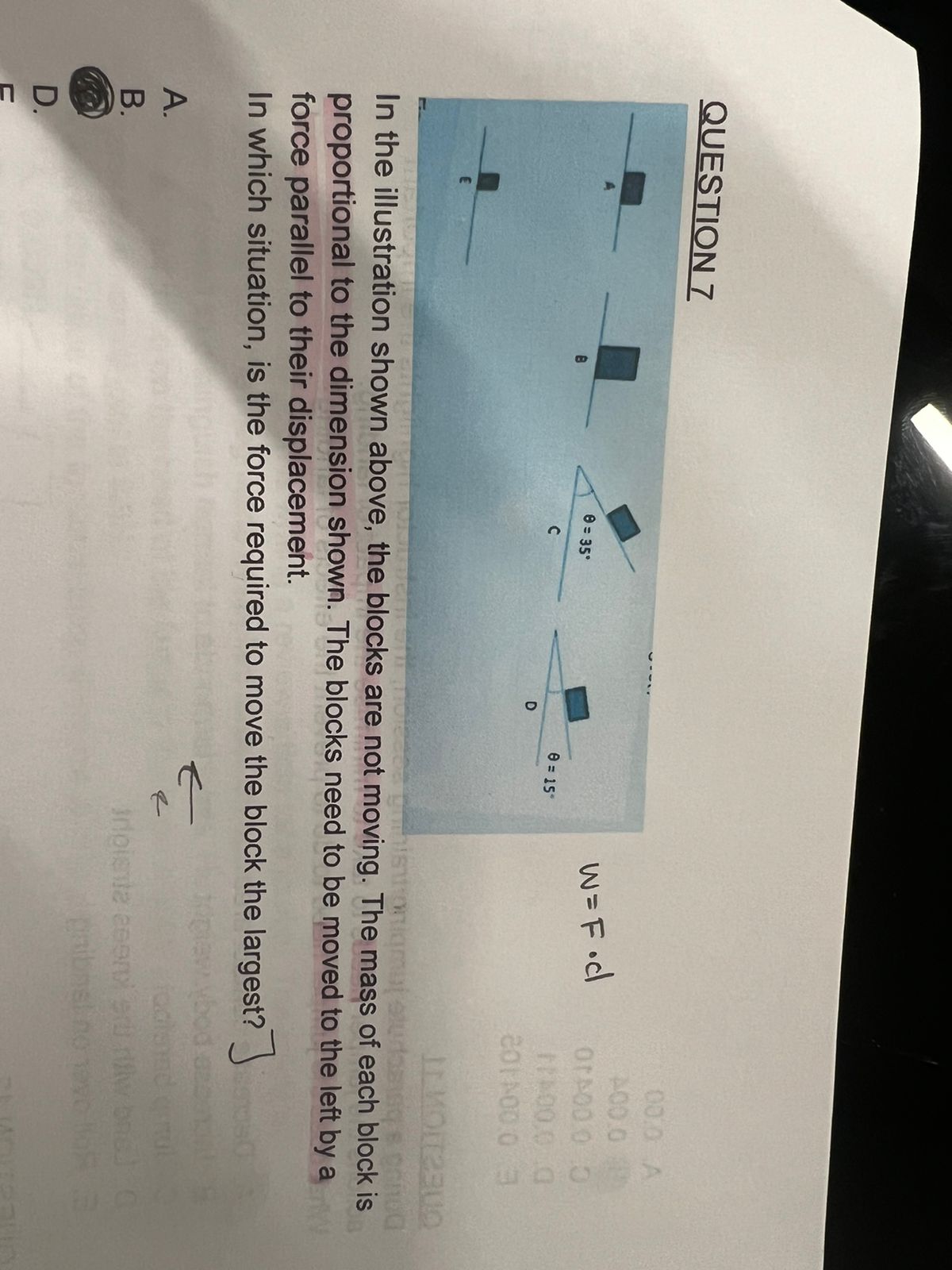In which situation is the force required to move the block the largest?

Understand the Problem
The question is asking which situation requires the largest force to move a block, given that the force is proportional to the displacement and the mass of the blocks. It involves understanding the relationship between force, angle, and displacement.
Answer
Angle D (15°) requires the largest force to move the block.
Answer for screen readers
The situation that requires the largest force to move the block is at angle D (15°).
Steps to Solve
- Understanding the Forces Involved
The force required to move the block will depend on the angle at which the force is applied and the distance if the force is not directly horizontal. The work done, $W$, is given by the equation:
$$ W = F \cdot d $$
where $F$ is the force applied, and $d$ is the displacement.
- Analyzing Each Block's Situation
For each given angle (0°, 15°, etc.), we need to determine how much of the force contributes to the horizontal movement. The component of the force acting parallel to the displacement can be expressed as:
$$ F_{parallel} = F \cdot \cos(\theta) $$
where $\theta$ is the angle of inclination.
- Calculate the Required Force for Each Angle
For each situation (blocks A, B, C, and D), calculate the component of the force that is effective in moving the block. The effective force that contributes to horizontal displacement can be rewritten as:
$$ F_{effective} = \frac{W}{d} \cdot \frac{1}{\cos(\theta)} $$
Here, $d$ can vary depending on how far each block is displaced.
- Identify the Situation with the Largest Force
Compare the effective force calculated for each block. The situation with the highest effective force would indicate the largest force required to move the block.
The situation that requires the largest force to move the block is at angle D (15°).
More Information
When dealing with forces and inclined angles, higher angles generally result in lower horizontal components of the force. The block at 15° requires the most force because the force component working against the angle is reduced, resulting in the necessity of applying more force overall.
Tips
- Confusing the direction of force components; always separate the vertical and horizontal forces.
- Forgetting to calculate the work done using the correct angle for force components.
- Not accounting for the effective distance when adjusting for angles.
AI-generated content may contain errors. Please verify critical information